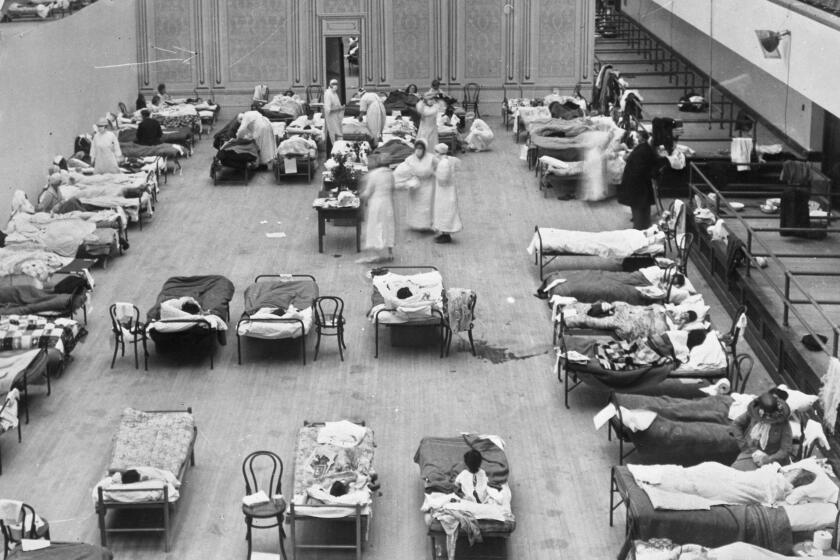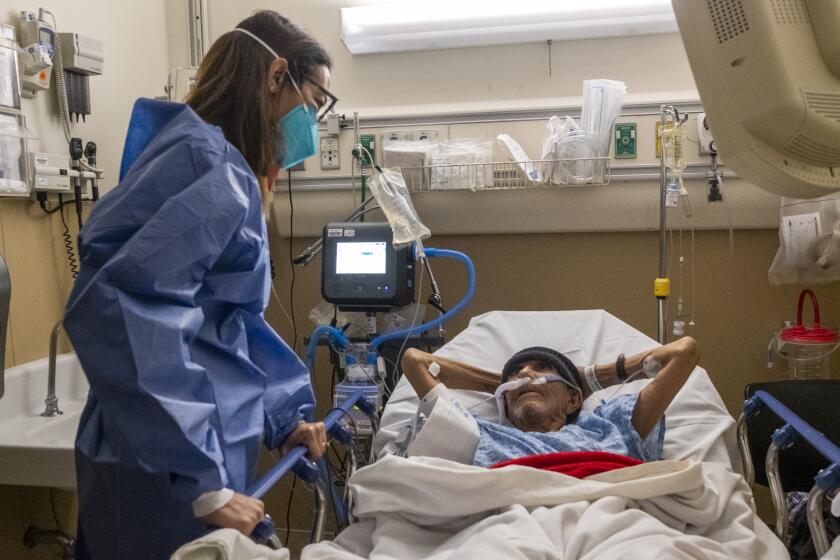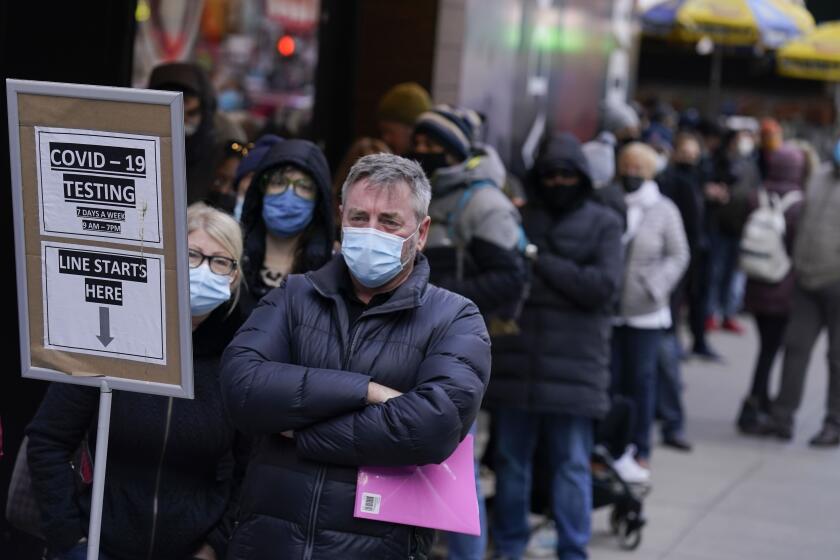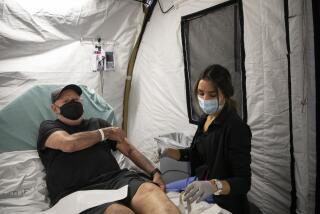Weariness sets in as pandemic enters third year with no end in sight
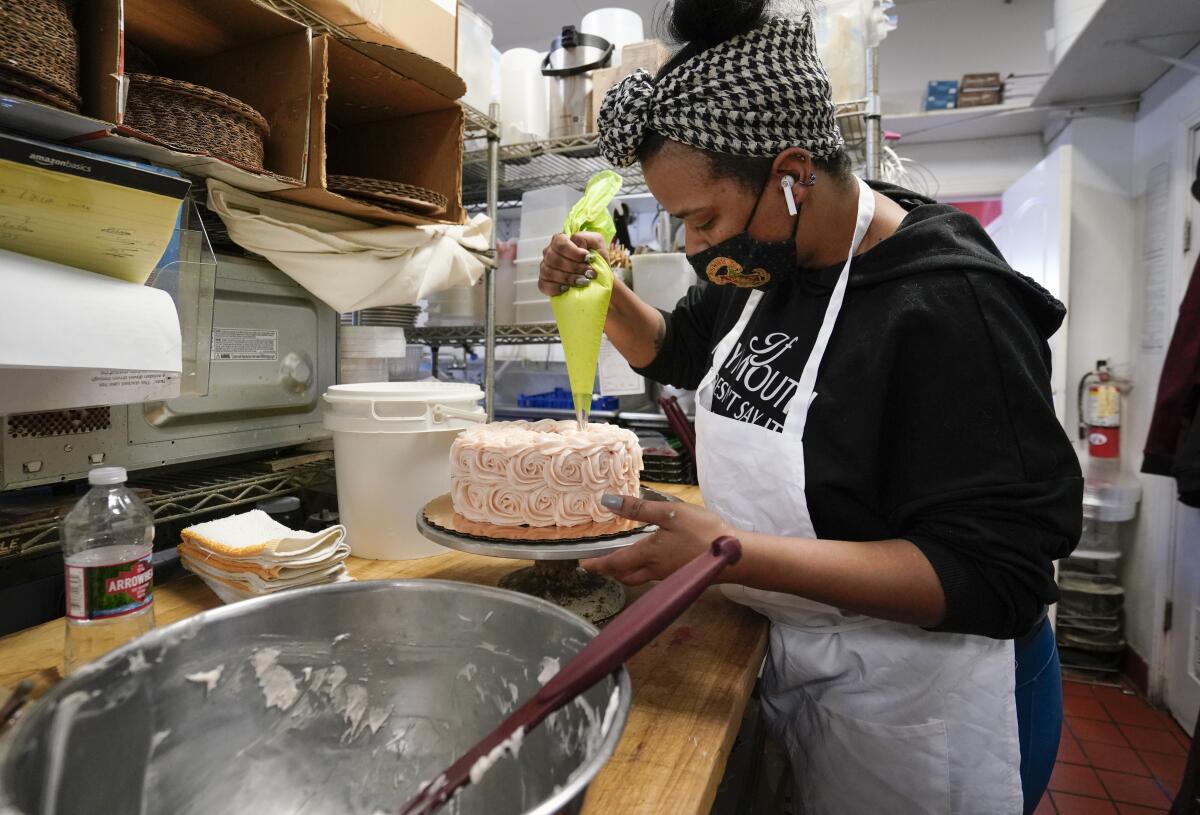
SAN DIEGO â Whether you are vaccinated or unvaccinated, the recent surge caused by the highly transmissible Omicron variant probably feels like a cruel joke as it pushes the pandemic into its third year. And itâs taking a toll.
âRight now, the fatigue is coming into an all-time high, having to do this Groundhog Day over and over and over again,â said Cathryn Nacario, chief executive of the National Alliance on Mental Illness of San Diego and Imperial counties. âAnd everybodyâs just exhausted.â
Nacario, who also is president of the Mental Health Contractors Assn. of San Diego County, said mental health providers in large and small agencies have shared similar experiences, with clients who feel frustrated and confused by shifting guidelines issued by county, state and federal agencies.
âItâs a weekly, changing, moving target thatâs taken its toll on everybody,â she said. âIt has people completely over the top. Thereâs also desperation of, âWhen is this going to be over with?ââ
San Diego clinical psychologist Michelle Carcel said anxiety levels dropped last year as infection rates decreased and businesses reopened, but theyâre on the rise again.
âWeâre seeing this across the board,â she said, adding that the back-and-forth rules of how to function during the pandemic have added to stress levels.
That frustration was summed up in a recent Instagram post by Twiggs Bakery & Coffeehouse co-owner Dan Stringfield.
âIâm fighting that âhere we go againâ feeling,â he wrote about learning that two orders for wedding cakes had been canceled with less than a weekâs notice because the ceremonies had been postponed due to COVID-19.
âWe got through it before,â the post continued. âWeâll get through it again, though this time weâre dead inside. Joking. Sort of. This too shall pass.â
Reached at the bakery, Stringfield said orders for eight birthday cakes had been canceled in the past few weeks.
âItâs not like weâre going to go bankrupt, but itâs this âdĂŠjĂ vu all over againâ feeling,â he said.
Things have been worse. Toilet paper has not disappeared from shelves, as it did in the early days of the pandemic; theaters and restaurants are open; and there are no long lines to get into Costco and other stores. But as bad as 2020 was, there was a sense then that the ordeal was temporary. Now it feels never-ending.
âI think itâs almost at a scarier crisis level, because we did fall into a little complacency,â Nacario said. âYou know, âThings are getting better, itâs going to be over, 2022 is going to be great.â And then everybody got kind of backhanded with this, and itâs deflating.â
And the stress isnât just about the pandemic.
The rise in reported cases is the fastest accumulation of infections in the history of the pandemic.
âThis is in combination with other things going on,â Carcel said. âWeâre also seeing changes in our economic situation, financial situations. This is happening in a political way as well. So weâre seeing a little bit of a resurgence in anxiety and depressive symptoms in a lot of people.â
Inflation hasnât been this bad in 40 years, the supply-chain disruption is affecting everything from tacos to auto parts, and the country seems more politically divided than ever. People who had looked forward to vacations are making other plans as thousands of flights have been canceled because of staffing shortages caused by Omicron cases.
âThereâs a lot of external factors that are influencing peopleâs overall mood, and thatâs triggering for people who have trauma histories,â Carcel said.
While anxiety levels may have reached an all-time high, the stress has been building for some time. Carcelâs practice is at capacity, and she said she hasnât taken a new client in months.
Carcel said people who had developed ways to handle stress are seeing those skills and strategies wane during the new surge.
Meditation is a form of stress relief for many. Jeff Zlotnik, co-founder of the San Diego Buddhist temple Dharma Bum, said classes in the practice have soared.
âTheyâre afraid, theyâre uncertain and, I think, scared with what theyâre dealing with now,â he said about people who have begun meditating. âAnd thatâs led people to seek something for their mental and emotional health.
âIn short, thereâs a tremendous increase in people weâre seeing, and itâs a stress level that Iâve never seen in my life. And weâve been running this temple for 15 years.â
The temple was closed for visits for about 17 months, but meditation classes continued virtually. As coronavirus cases dropped last year, the temple reopened in July. But with Omicron cases on the rise, it closed again last week.
âHere we go for round two of being shut down completely,â Zlotnik said.
Scientists warn that Omicronâs whirlwind spread across the globe practically ensures it wonât be the last worrisome coronavirus variant.
Going back to online sessions was the right thing he do, he said, adding that 15 people have thanked him for thinking of their health and safety. Ironically, attending meditation classes in person was causing people to stress out, he said.
âEven though people are tired of being shut out, theyâre just more comfortable not being there in person,â Zlotnik said.
The stress levels have been particularly hard on school-age children and their families, said neurophysiologist Joanna Savarese.
âBecause itâs been so inconsistent over the last few years, the kids havenât been able to stabilize,â she said. âYouâre kind of going in and out. We were going into lockdown, and then we werenât. And some schools were online, and some werenât. Some schools had masks, and some schools didnât. Thereâs just a lot of inconsistency in the educational system right now because of COVID.â
Savarese is owner of San Diego BrainWorks and recently launched an intensive outpatient program for adolescents.
âWeâre focusing on all adolescent mental health issues, and weâre also working with families managing themselves, managing their kids, managing communication, coping strategies and support,â she said.
The isolation of distance learning added to the pressure of students to perform, she said, and to the stress of parents who had to observe them. That could be especially exasperating for parents with children who have learning challenges and mood issues.
âIt put a lot of added pressure on parents who also work and need to manage their own lives,â she said.
More to Read
Sign up for Essential California
The most important California stories and recommendations in your inbox every morning.
You may occasionally receive promotional content from the Los Angeles Times.
